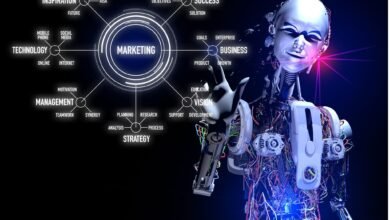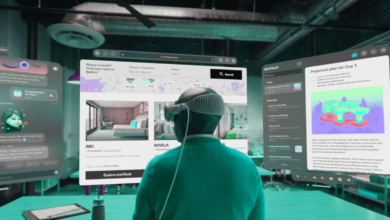How Social Media is Influencing Elections and Public Opinion
Social media influence on elections is reshaping democracy. Explore how platforms impact voting, spread misinformation, and alter public opinion.

Social media has fundamentally reshaped elections and public opinion, becoming a dominant force in modern democracy. Platforms like Facebook, Twitter (X), Instagram, and TikTok have revolutionized political communication, allowing candidates to engage directly with voters, mobilize supporters, and spread their messages at unprecedented speed. Unlike traditional media, social media enables real-time interaction, personalized content, and viral campaigns tools that have been leveraged in major elections worldwide. However, this influence comes with significant risks, including the spread of misinformation, foreign interference, and the creation of polarized echo chambers. As social media’s role in politics grows, understanding its impact is crucial for safeguarding democratic processes.
The power of social media lies in its ability to amplify voices both constructive and destructive. Grassroots movements gain global traction through hashtags, while misinformation can spread faster than fact-checkers can respond. From Barack Obama’s pioneering use of Facebook in 2008 to the rise of deepfakes and AI-generated content in recent elections, the digital landscape continues to evolve. This article explores Public Opinion and how social media shapes voter behavior, the challenges it poses to election integrity, and the ongoing debate over regulation. As democracies grapple with these changes, the question remains: Can social media be harnessed for good, or does its influence threaten the very foundations of fair and free elections?
How Social Media is Influencing Elections and Public Opinion
The Role of Social Media in Modern Elections
Social media has fundamentally altered the political landscape, offering candidates and parties unprecedented access to voters. Unlike traditional media, which relies on television, radio, and newspapers, social media enables direct, real-time interaction between politicians and the Public Opinion. Campaigns can now tailor messages to specific demographics, using algorithms to target undecided voters with precision. Barack Obama’s 2008 presidential campaign was among the first to leverage social media effectively, using platforms like Facebook and YouTube to mobilize young voters.
The Power of Targeted Advertising and Echo Chambers
One of the most significant ways social media influences elections is through targeted advertising. Platforms collect vast amounts of user data interests, browsing habits, location allowing political campaigns to deliver hyper-personalized messages. Cambridge Analytica’s misuse of Facebook data in the 2016 Brexit referendum and U.S. election demonstrated how psychological profiling can be used to sway voters. While such practices have since faced scrutiny, micro-targeting remains a cornerstone of digital campaigning.
Misinformation, Deepfakes
The rapid spread of misinformation is perhaps the most pressing issue in the intersection of Public Opinion, social media and elections. False claims, doctored images, and misleading narratives can go viral within minutes, making it difficult for fact-checkers to keep up. During the 2020 U.S. election, baseless theories about voter fraud proliferated on platforms like Twitter and Facebook, leading to real-world consequences, including the Capitol riot on January 6, 2021.
The Challenge of Fact-Checking
Deepfake technology adds another layer of complexity, enabling the creation of realistic but fabricated videos of politicians saying or doing things they never did. While platforms have implemented policies to label or remove false content, the sheer volume of posts makes enforcement inconsistent. The challenge lies in balancing free expression with the need to prevent harmful disinformation a dilemma that continues to spark debate among policymakers, tech companies, and civil rights advocates.
Ethical and Regulatory Challenges
Lack of Transparency
The opaque nature of social media algorithms and political ad targeting creates a dangerous accountability gap. Platforms rarely disclose how content is amplified or who funds political campaigns, leaving voters in the dark about manipulation attempts. Shadowy “dark ads” target specific demographics with tailored messages that evade public scrutiny, while algorithmic decisions remain corporate secrets. This secrecy enables foreign interference, extremist recruitment, and the spread of disinformation without consequence.
Freedom of Speech vs. Harmful Content
The tension between free expression and content moderation is one of the most contentious issues in digital governance. While social media platforms provide unprecedented spaces for public discourse, they also struggle to balance open dialogue with the need to curb hate speech, misinformation, and incitements to violence. Critics argue that excessive censorship stifles legitimate debate, while others warn that unchecked harmful content undermines democracy and public safety. High-profile cases—like Twitter’s ban of Donald Trump or Facebook’s handling of COVID-19 misinformation—highlight the challenges of setting consistent, fair policies. The lack of clear legal frameworks leaves platforms to make ad-hoc decisions, often facing accusations of bias from both sides
Attempts at Regulation
Governments worldwide are scrambling to regulate social media’s impact on democracy, with mixed results. The EU’s Digital Services Act (DSA) forces platforms to disclose algorithmic logic and report disinformation, while the U.S. Honest Ads Act (stalled in Congress) aims to make online political ads as transparent as TV spots. Brazil criminalizes election-related deepfakes, and India mandates fact-checking labels for government-flagged content. Yet enforcement remains patchy—meta and Google often exploit loopholes, while smaller platforms evade scrutiny entirely.
The Future Can Social Media Be Fixed?
Strengthening Media Literacy
Improving media literacy is crucial in combating misinformation on social media. By educating users on how to identify credible sources, fact-check claims, and recognize bias, individuals can make more informed decisions. Schools and public awareness campaigns should teach critical thinking skills, such as analyzing headlines for sensationalism and verifying information before sharing. Governments and tech companies can collaborate to promote media literacy programs, ensuring users understand algorithmic manipulation.
Algorithmic Reforms
Social media algorithms prioritize engagement, often amplifying divisive or misleading content because it triggers strong emotional reactions. Reforming these systems is essential to reduce polarization and misinformation. One approach is shifting from engagement-based ranking to chronological or relevance-based feeds, ensuring users see diverse viewpoints rather than being trapped in echo chambers. Platforms could also introduce transparency, allowing users to understand why certain content appears in their feeds.
Government and Tech Collaboration
The unchecked influence of social media on elections demands coordinated action between governments and tech companies. While platforms have introduced measures like fact-checking labels and ad transparency tools, inconsistent enforcement and loopholes remain. Governments must establish clear, adaptable regulations—such as mandatory disclosure of political ad funding and real-time databases for public scrutiny. Meanwhile, tech firms should invest in independent oversight, allowing external audits of algorithms and content moderation systems.
Read More: How AI is Changing Education: The Future of Learning
Conclusion
Social media has undeniably transformed the landscape of elections and public opinion, becoming both a powerful tool for democratic engagement and a potential threat to electoral integrity. On one hand, it has democratized political participation, allowing candidates to reach voters directly, empowering grassroots movements, and fostering real-time civic discourse. On the other hand, the rapid spread of misinformation, the rise of algorithmic echo chambers, and the risk of foreign interference highlight the darker side of this digital revolution. As platforms continue to evolve with AI-generated content and hyper-targeted advertising, the challenge Social Media in balancing innovation with accountability.
Moving forward, safeguarding democracy in the age of social media will require a multi-faceted approach. Governments, tech companies, and civil society must collaborate to enhance transparency in political advertising, strengthen fact-checking mechanisms, and promote digital literacy among voters. While regulation is necessary to curb manipulation, it must be carefully designed to avoid stifling free speech. Ultimately, the future of elections will depend on Public Opinion how effectively society harnesses the benefits of social media while mitigating its risks ensuring that technology serves democracy rather than undermines it.
FAQs
How does social media influence voter behavior?
Social media shapes voter behavior through targeted ads, viral content, and echo chambers, reinforcing existing beliefs and sometimes spreading misinformation.
What role did social media play in past elections?
Platforms like Facebook and Twitter were used in elections like the 2016 U.S. race and Brexit for micro-targeting and disinformation campaigns and Public Opinion.
Can social media cause political polarization?
Yes, algorithms often show users content that aligns with their views, Public Opinion, creating echo chambers that deepen partisan divides.
How can misinformation on social media be controlled?
Fact-checking, AI detection tools, and stricter platform policies can help, but user education is also crucial.
Should governments regulate social media during elections?
Regulation is debated some argue for transparency in political ads, while others fear censorship and free speech violations.







